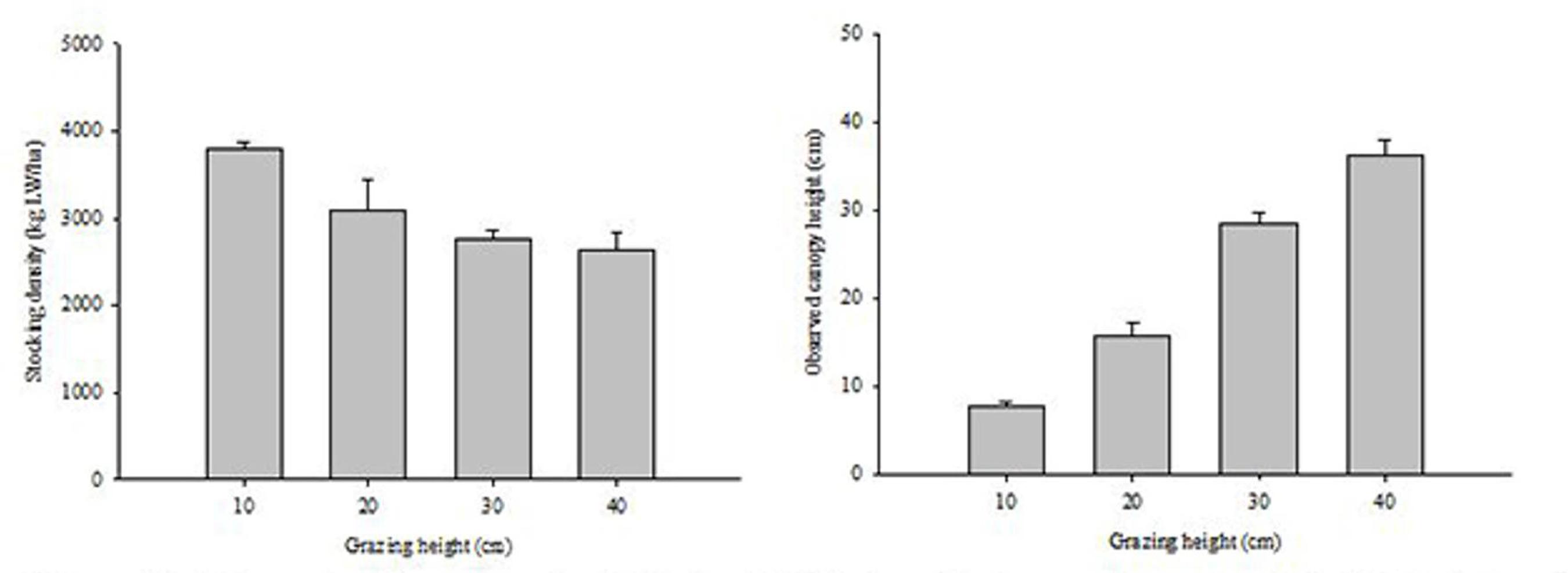Abstract
The aim of this study was to evaluate some morphogenetic and structural characteristics to explain variations in forage accumulation of Alexandergrass (Urochloa (Syn. Brachiaria) plantaginea) under continuous stocking method. The experimental treatments consisted of four grazing heights (10, 20, 30, and 40 cm), allocated to experimental units following a randomized block design with three replicates. The following variables were analyzed: leaf appearance, elongation, and senescence rates, leaf lamina length, number of leaves per tiller, leaf area index (LAI), and forage accumulation rate. Data were submitted to analysis of variance and means were compared by Student's t-test (P≤0.05). The main results were: i) different grazing heights had different tissue flows; ii) grazing heights between 30-40 cm showed the highest LAI, and produced similar values; iii) forage accumulation rate increased according to grazing height increments, but did not change above 30 cm. In conclusion, Alexandergrass pastures under continuous stocking should not be maintained at grazing heights lower than 30 cm if the objective is to maximize forage production.
Keywords:
tissue flow; forage production; grazing intensity; integrated crop-livestock systems

 Source: Agricultural Research Institute of Paraná (IAPAR).
Source: Agricultural Research Institute of Paraná (IAPAR).

